Key Conclusions SECW 2024
Content
1. Introduction of the Carbon Border Adjustment Mechanism (CBAM)
The introduction of the Carbon Border Adjustment Mechanism (CBAM) for the export of electricity and products to the EU was one of the key topics of the Sarajevo Energy & Climate Week – SECW 2024. It was concluded that in 2025, it is necessary to initiate a dialogue with the EU regarding the application of CBAM to the countries of the Western Balkans, considering that these countries have energy agreements with the EU through the Energy Community, as well as signed Stabilization and Association Agreements (SAA) that regulate free trade. They should not be treated as “third countries” under the EU Directive regulating CBAM. At the same time, work should be done on meeting key conditions to avoid CBAM for Bosnia and Herzegovina, including the establishment of an electricity market, integration with the EU market, and the establishment of a greenhouse gas emission trading model based on the EU ETS system. The presence of representatives from EPBiH and HZHB was of crucial importance, as they spoke about the challenges they face and the specific actions Bosnia and Herzegovina needs to take.
2. Development and Conceptualization of Energy Community Projects
At SECW 2024, it was noted that there is significant interest among local government units in the Western Balkans for the development and conceptualization of energy community projects, or citizen energy. The conditions for this have been created through the implementation of Directive (EU) 2018/2001 into national legislation. The next step is to adopt secondary legislation that will regulate the processes for establishing energy communities and incentive mechanisms. Significant support for this process in Bosnia and Herzegovina is provided by GIZ through the CAET project. In addition to GIZ’s support, local government units require closer cooperation and communication, as well as further support from higher levels of government across the region. The concept of energy communities is one of the models for increasing electricity production from renewable sources, while also serving as a scenario for reducing peak loads on networks, relieving networks, and decarbonizing distributed generation.
3. Just Transition
Just transition was also one of the key topics of the conference. The goal was to encourage discussion on ongoing activities, projects, practices, and the next steps that need to be taken to achieve a just transition, particularly in coal-rich regions. In discussions with experts, decision-makers, representatives from the private and public sectors, and civil society, the challenges they face in their work were examined, along with proposed solutions to minimize the negative consequences of mine closures and the cessation of fossil fuel use. Through a panel discussion, representatives from Adriatic Metals BH, along with other panelists, shared experiences on current projects contributing to a just transition and highlighted the development opportunities brought about by the transition process.
4. Establishment of an Electricity Market
The establishment of an electricity market and the integration of the electricity market into the single EU market is one of the priorities of Bosnia and Herzegovina’s energy sector. Bosnia and Herzegovina is the only member of the Energy Community that has not established an electricity market, despite being a net exporter of electricity. This is a priority task, especially considering that it is one of the conditions that must be met to avoid the negative consequences of the EU’s introduction of CBAM. It is indisputable that a functional market will accelerate investment in renewable energy sources, while the redesigned market is expected to provide security to investors and protect consumers from large fluctuations in electricity prices. Thanks to the panel organizer, EU4ENERGY, experts from the region attended the conference and constructively explained why the establishment of an electricity market is important and what it would bring.
5. Challenges of Integrating Production Capacities
Another key topic at SECW was related to the challenges of integrating renewable energy-based production capacities into transmission and distribution networks. It was highlighted that the electricity transmission company in Bosnia and Herzegovina has received requests for preliminary energy consents for projects totaling 16 TW, of which 12 TW are from wind energy (FNE) and 4 TW from solar energy (VE). Many of these projects will not be realized, but the existing transmission capacities are insufficient even for the projects that are likely to be implemented. It is necessary to increase the capacities of transmission and distribution networks, develop transmission networks in areas rich in renewable resources (wind, solar, hydro potential), and reconstruct existing networks using new (smart) technologies. The need to increase interconnection capacities with neighboring countries was also emphasized. It was concluded that overcoming these challenges requires the involvement of strategists, decision-makers at all levels, planners, regulators, operators, investors, and the expert and scientific community.
In addition to representatives of state institutions, representatives from investment banks such as EIB, EBRD, and KfW also participated.
6. Energy Efficiency First
During the panel “Energy Efficiency First,” key issues and challenges in implementing energy efficiency measures in Bosnia and Herzegovina were discussed. Representatives from MVTEO, FMPU, FMERI, and MER RS, with thanks to the panel organizer, UNDP, emphasized the importance of a strategic approach to achieving sustainable development goals. In this regard, it is necessary to: adopt a comprehensive strategic framework, amend the Law on Energy Efficiency, develop systemic and sustainable financing mechanisms for energy efficiency projects, and prioritize the implementation of basic energy efficiency measures before transitioning to more advanced technologies. The building sector was recognized as a priority for achieving energy efficiency goals. Efforts must focus on educating and informing the public about energy efficiency measures, achieved goals, and examples of best practices. The issue of energy poverty was recognized as particularly important, requiring special attention in strategic planning. It is necessary to define and identify socially vulnerable households and create social cards.
